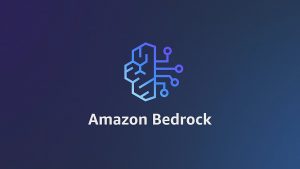NetApp doubles down on flash : Latest hybrid cloud push
Continuing on its quest to deliver a universal data platform for the hybrid cloud, NetApp today unwrapped two new storage arrays and an enhanced E-Series configuration.
![]()
What’s New
Most notable of the three is the NetApp EF550, a flash-accelerated system designed for mission-critical workloads such as databases, virtual desktops and web services that process a large number of user requests. The platform provides consistent sub-millisecond latency and built-in remote replication while delivering the performance of two full racks of traditional disk drives, NetApp says.
The EF550 is joined by the E2700, which is built for use in branch offices and remote locations. The system is geared towards reducing maintenance, and supports the latest generation 12G SAS storage technology as well as the more traditional iSCSI protocol. Like its SSD-backed cousin, the E2700 aims to deliver more bang for your storage buck through a combination of horsepower and efficiency.
Finally, NetApp beefed up its E5500 SAN array with new replication features and made it compatible with 10G iSCSI, 16G FC, SAS and InfiniBand.
George Kurian, the executive vice president of product operations at NetApp, noted that “these solutions satisfy our customers’ needs for their multiple workloads and deployment models — either dedicated or as part of a shared infrastructure. By expanding our EF-Series all-flash arrays and E-Series platforms we are meeting growing market demand for dense, performance-oriented architectures and delivering superior performance, reliability, efficiency and scale.”
Flash-powered business
Now that Big Data trends have reach critical mass in the business world, CIOs recognize the need for flash in the data center. Reconfiguring IT around data is a sprawling task that simply isn’t possible without the perks of flash, like low latency, its ability to handle larger workloads and helping to free bottlenecked databases. That means easier and faster access to the data now driving real-time and advanced analytics, helping to deliver on the very ambitious promise of data-friendly software.
![]() “Thanks to flash, information has become transactional in nature,” says Mark Welke, senior director of platform marketing at NetApp. “Users have grown conditioned to expect—and will most certainly come to demand—an experience that is more tailored, more informed, and more immediate in order to make business and even personal choices.
“Thanks to flash, information has become transactional in nature,” says Mark Welke, senior director of platform marketing at NetApp. “Users have grown conditioned to expect—and will most certainly come to demand—an experience that is more tailored, more informed, and more immediate in order to make business and even personal choices.
“To meet these expectations, decisions and data are saved and harvested for future analysis,” Welke goes on. “The continued sharing and accessing of this data will create huge repositories in the cloud, hosted everywhere: on social networks, at major consumer retailers, by manufacturers, and anywhere else it makes sense for information to be shared. This data will be enjoyed by end users, analyzed by business, and distributed on ultra-high-speed networks for those to consume. The management of the data will continue to be the most challenging aspect in the future, as it is today.”
- Automation is critical
Automation is an important differentiator for NetApp as it evolves its ONTAP operating system for enterprise use. This is how NetApp’s flash enablers directly interface with the customer, especially through its 170+ partners, and confidence will be key. It’s good that NetApp’s drilling down on multiple aspects of the storage market, sprinkling in popular hyperscale capabilities and connecting to strategic platforms including Amazon Web Services. At the center of it all is ONTAP, boosting productivity through automated services that can fix themselves to a certain extent.
“For NetApp, automation is critical,” writes Wikibon co-founder David Vellante. “It’s easy to move stuff around with NetApp’s architecture but it’s still manual. Running scripts on one box and moving things around to another is no big deal. But when you move to a large environment, scripts don’t scale. When something goes bad you need the system to heal itself.”
Maturing flash for the long haul
Hybrid is the key for NetApp, in its most recent step towards building a mature and comprehensive suite that solves real business problems. Specifically, NetApp is connecting clouds across the data center, addressing the needs of dedicated cloud, private and hyperscale environments for unified management processes.
We’ve found ourselves in a software-influenced data center where flash is the catalyst powering a good chunk of innovation. The storage provider is battling a tough market that’s revolutionizing infrastructure, from server configuration to networking.
It’s been a busy year for NetApp, addressing some of the key issues with its portfolio that’s kept the storage company from toppling rivals in recent years. Democratizing data through enabling multiple workloads and broader deployments introduces some of the tools customers are looking for with long-term solutions, as some of NetApp’s earlier flash updates have tackled only short term needs. In doing so, NetApp moves the power of computing closer to the end user.
- New tools for new needs
As the enterprise space evolves, its storage requirements evolve too. Addressing the new needs of the enterprise, NetApp recently released Clustered Data ONTAP 8.2, introducing a number of powerful capabilities designed to cut through traditional storage limitations and help IT departments “non-disruptively align the storage infrastructure with changing business and application demands.”
NetApp is going all-in on clustering, a gamble that Wikibon co-founder and chief analyst Dave Vellante says can pay off big time given the rapid adoption of software-led architectures in the enterprise.
Looking at the big picture, NetApp’s hybrid cloud strategy spans hardware, software and its partner ecosystem. To that end, the vendor recently introduced a set of plug-ins that connects its storage software with Oracle’s database solutions to simplify monitoring and replication. The integrations enable admins to manage their ONTAP environments and Oracle deployments using the same interface.
Recapping on the evolution of NetApp’s storage portfolio, discussing virtualization and software-defined solutions, is NetApp’s own Kristina Brand and Lisa Crewe.
contributors: Maria Deutscher
photo credit: james_clear via photopin cc
A message from John Furrier, co-founder of SiliconANGLE:
Your vote of support is important to us and it helps us keep the content FREE.
One click below supports our mission to provide free, deep, and relevant content.
Join our community on YouTube
Join the community that includes more than 15,000 #CubeAlumni experts, including Amazon.com CEO Andy Jassy, Dell Technologies founder and CEO Michael Dell, Intel CEO Pat Gelsinger, and many more luminaries and experts.
THANK YOU













